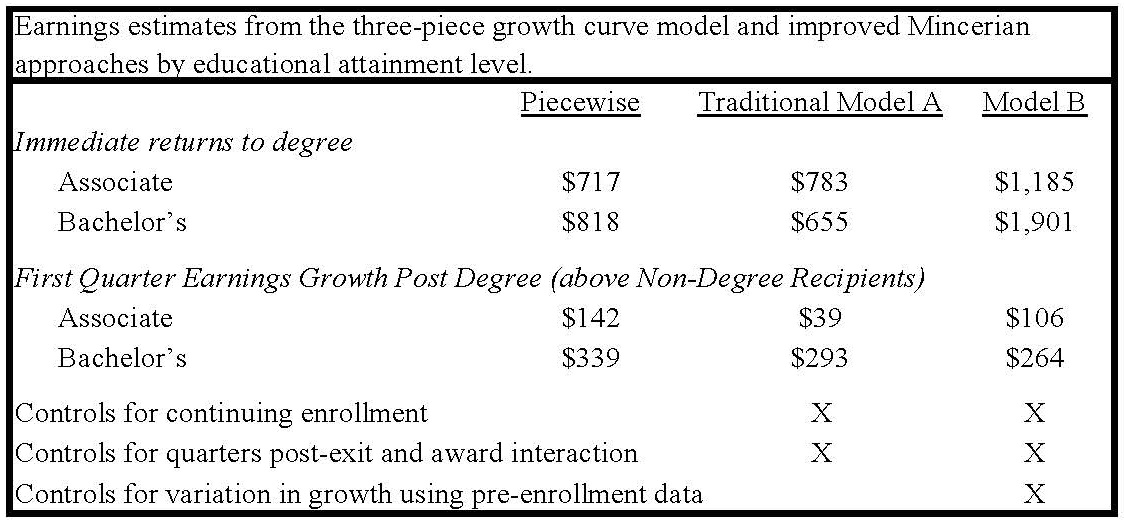Examining the Earnings Trajectories of Community College Students Using a Piecewise Growth Curve Modeling Approach
Summary by: Lily An
Traditional methods of estimating the returns to community college remain imprecise.
Historically, to estimate the labor market returns to a community college degree, researchers have compared the earnings of students who completed a degree to those who did not, at a single point in time, while controlling for background characteristics. With the expansion of longitudinal data sets, researchers have begun to consider how earnings before and during community college can affect returns to community college. However, even improved econometric analyses overlook some temporal influences on predicted earnings growth, such as the time between graduation and measured earnings, instead estimating averaged returns over time. These influences are particularly salient for community college students, who vary in their time-to-degree completion and often enter college with pre-existing or concurrent work experiences.
Growth curve modeling: estimating returns to college as a dynamic process over time.
In this paper, Jaggars and Xu describe earnings growth for first-time community college students using piecewise growth curve models and compare these results to traditional modeling approaches.

Piecewise growth curve models examine and account for earnings in specific time periods: pre-enrollment in community college, during-enrollment, and post-exit. The authors find that earnings and earnings growth both before enrolling in and after completing community college are different for students who earn a degree compared with those who do not. Several years post-graduation, most returns to community college are due not to immediate increases in earnings levels but rather to increases in awardees’ earnings growth across time. Traditional modeling approaches fail to account for this variation in immediate returns and earnings growth and rely on assumptions that the authors demonstrate are not satisfied. The authors also improve traditional approaches for comparison (see table above), but they find that traditional models’ earnings estimates in the first quarter post-graduation remain inconsistent with piecewise growth modeling approaches: across all awards, the piecewise growth curve models estimate around half the immediate earnings compared to the most improved traditional model (Model B), along with substantially larger earnings growth.
How did the authors conduct this study?
They fit a suite of models to a sample of ~70,000 Virginia community college students who first enrolled from fall 2006 to fall 2008. The administrative records were matched to ~850,000 Unemployment Insurance records from Q1 2005 to Q1 2013, all adjusted to 2010 dollars. The researchers also estimated earnings for community college students who later completed a bachelor’s degree. Though growth curve models do not relax all assumptions about how earnings change over time, they can ask different questions and provide greater transparency about the influence of traditional assumptions on earnings estimates.
Full Article Citation:
Jaggars, S. S., & Xu, D. (2016). Examining the earnings trajectories of community college students using a piecewise growth curve modeling approach. Journal of Research on Educational Effectiveness, 9(3), 445-471.
